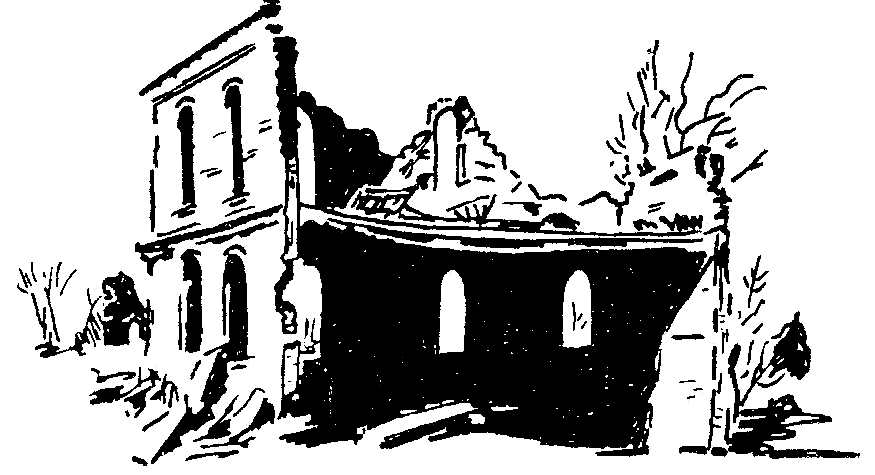|
Then, three days later, an advance detail left for the continent, and we knew that in a day or two we'd be following. Dec. 30th our English currency was converted to francs, and the next day we stowed our vehicles. Tying everything down so that things would stay fixed on the channel crossing. It was the 2nd of January, 1945, when our vehicles left Camp Penning, at 0927. The next day the vehicles and personnel moved from the staging area and loaded up on a U. S. Victory ship. Meanwhile, back at Penning, that day - - Jan. 3rd, the main body with full field packs on their backs and with duffle bags in their hands, sloshed thru the tent city's mud for one final time - - and clambered up into huge army vans. In a matter of hours we found ourselves again on the docks of Southampton. And once again the familiar scene of Red Cross Club-mobiles and G. I.s with coffee and doughnuts was reenacted. Then, followed by the other companies in the Battalion, we marched up the gang blank of a fair sized Polish ship.
We were not on board ship twenty four hours when we sighted the port of Le Havre, France, January 4th, at 1500. Destruction such as we had never before seen nor even imagined, greeted our eyes as the transport steamed in closer to shore. No words or pictures could ever describe the destruction man creates with his war machine - and the harbor of Le Havre must be seen to bring home to one the works of war.
The method with which we landed upon the war-wrecked beach was something we cannot easily forget. As there were no piers or docks at which our ship could be moored - - or to which a gangplank could be lowered - - the ship was anchored approximately a mile out in the bay and L. C. T s maneuvered up to the sides of the ship where they were grappled and tied. A stair-ladder was lowered down to the L. C. T. and down it we came in single file. The ladder, we found, was several feet short, so we had to jump down into the L. C. T., which pitched and rolled to make things a little more difficult. A cheer went up for every man who finished the jump on his feet. Finally, all hands were aboard and the Navy men cast off - - and with the transport's searchlights upon us, (it was night now.) The L. C. T. pulled away for shore. In less than a half hour the landing ship hit the shore with a bump and the scraping of its flat bottom on the rocky sand. Several seconds later we were running out on the beach through the opened front.
Up the rocky beach we went till we came to a shell-pocked road on which more army vans awaited us. Now it began to snow and the night became bitterly cold, thereby making our two and a half hour trip in the open 'Cattle wagons', the most miserable one we had yet experienced. We all secretly sent up a prayer of thanks when we finally reached our destination - - a large chateau in the 'Red Horse' area, Normandy, near the town of Totes, France.
Two days later on January 6th our vehicles caught up with us, and for the next six days during which we stayed at the chateau, we worked on vehicles and equipment. And on January 9th we mounted up into our peeps, half-tracks and tanks (3 assault guns) and began a 174 mile trip to Rheims, France. After fourteen hours of travelling we arrived that evening in Rheims. There was not a chateau waiting for us near that town - - not even a pyramidal tent - - we just had a little clump of woods and a couple inches of snow in which to settle. And in the snow we pitched our pup tents. Here, hear Rheims, we learned how easy it was to contract trench foot, for though we wore overshoes on our combat boots - - our feet were always numb with cold. It was bitterly cold and the fact that we could not have fires during hours of darkness (for security reasons) did not help us in the least. Thus we spent a miserable two days, and we were glad to learn that we were moving again - - for on Jan. 12th we mounted up and rolled to Louvigny, France which was not many miles from Metz.

|